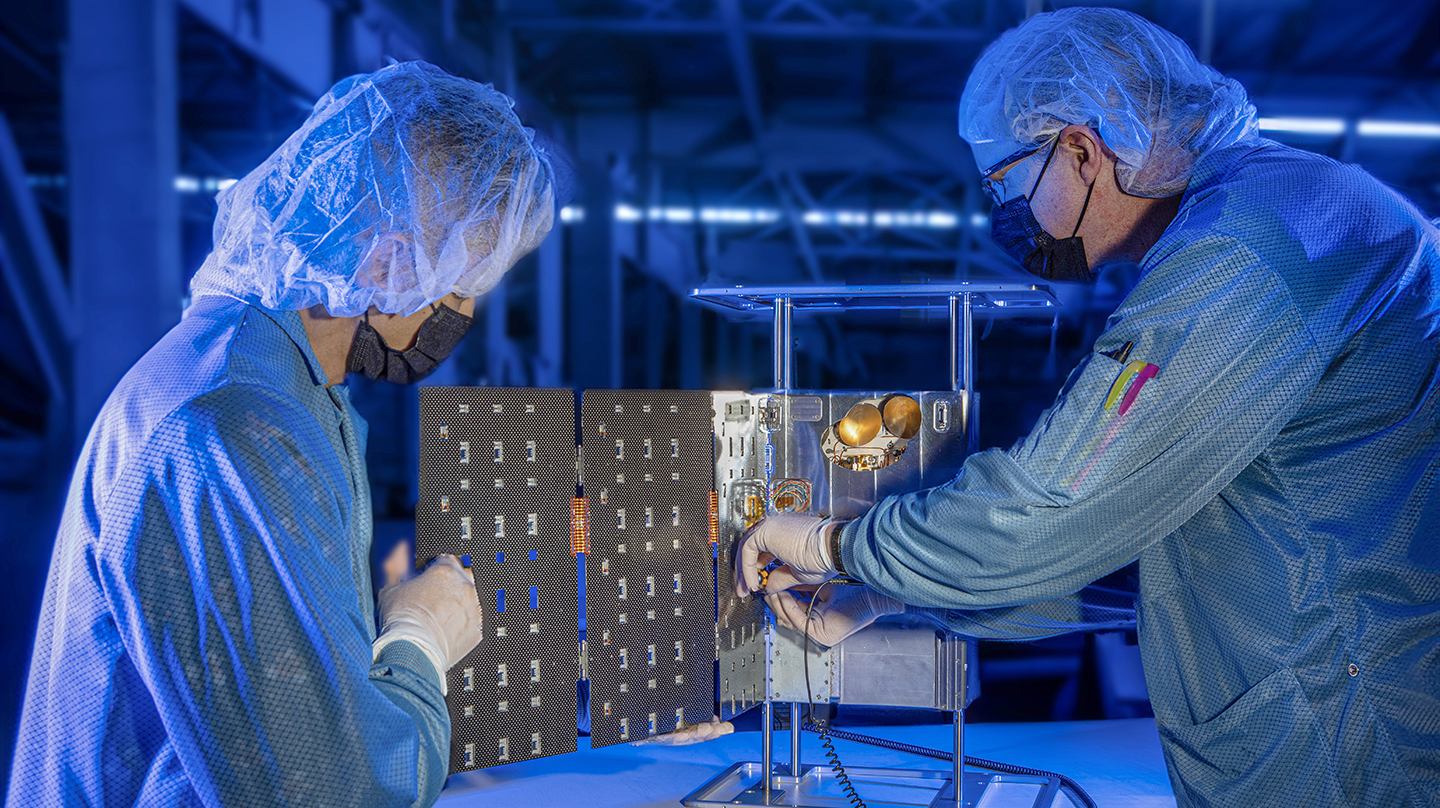Press Release
NASA’s EZIE Mission Set for 2025 Launch
NASA’s first mission to image the magnetic fingerprint of the auroral electrojets is now on pace for launch in 2025.
The Electrojet Zeeman Imaging Explorer (EZIE) mission led by the Johns Hopkins Applied Physics Laboratory (APL) in Laurel, Maryland, will make groundbreaking measurements of the electrojets — intense electrical currents that are part of the spectacular aurora — that flow high in the atmosphere in a thin layer separating Earth and the surrounding space.
EZIE will feature a trio of CubeSats, or small satellites, designed to move pole to pole and map the electrojets. In August, the EZIE team completed its pre-ship review, with NASA confirming the spacecraft and their support systems are ready to move to their eventual launch site.
Previously slated for liftoff in late 2024, EZIE’s shift to 2025 will vastly improve the measurements in support of the scientific analysis and thereby provide better information on the behavior of these electrojets, all within the mission’s previously established baseline cost constraint.
Mapping the electrojets will give scientists greater insight into the physics of Earth’s magnetosphere, as well as of other magnetized planets in our universe. The mission will also help scientists create better models for predicting space weather, phenomena from auroras to geomagnetic storms fueled by the Sun.
A launch in 2025 gives EZIE the opportunity to make observations during two Northern Hemisphere summers, when EZIE’s measurements can best be coordinated with ground-based instruments and when EZIE can make far more observations of the auroral phenomenon scientists are targeting.
“The additional summer for EZIE to collect data will provide an even deeper understanding of the electrojets and how they connect Earth to the rest of the surrounding geospace,” said Sam Yee, principal investigator for the EZIE mission at APL.
Scientists for EZIE are also working on EZIE-Mag, magnetometer kits that allow teachers, students and science enthusiasts to make their own measurements from the ground, which will be combined with EZIE’s measurements made from space to assemble a clear picture of this vast electrical current circuit. The launch shift also increases the benefits to the STEM (science, technology, engineering and math) community, allowing for more engagement and participation because there are greater opportunities for measurements.
The EZIE mission is funded by the Heliophysics Division within NASA’s Science Mission Directorate and is managed by the Explorers Program Office at NASA’s Goddard Space Flight Center in Greenbelt, Maryland.
APL designed the EZIE spacecraft and leads and manages the mission for NASA. NASA’s Jet Propulsion Laboratory built an instrument called the Microwave Electrojet Magnetogram for each of the three satellites, and Blue Canyon Technologies in Boulder, Colorado, built the CubeSats.

